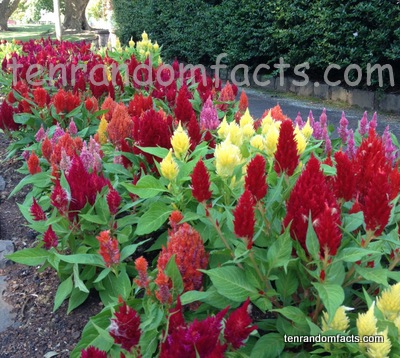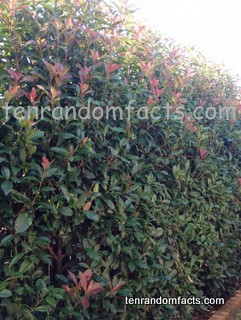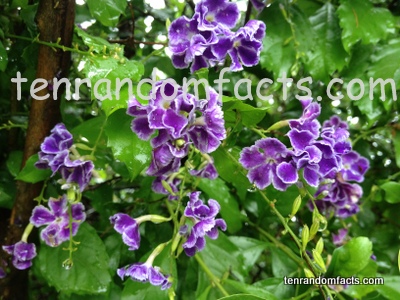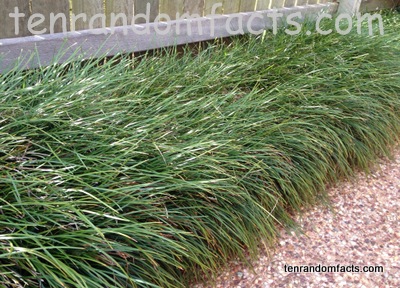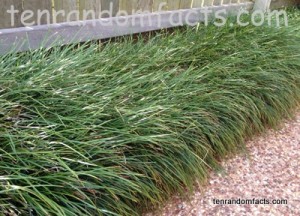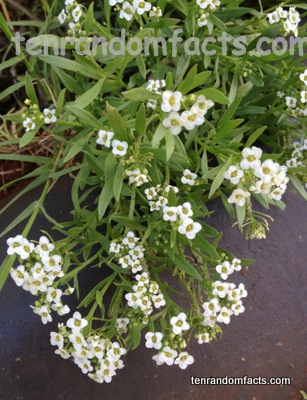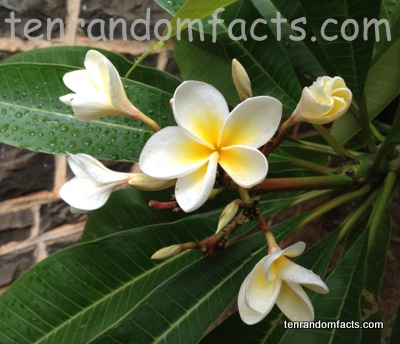
Beautiful flowers…
- Frangipanis are flowering plants from the family Apocynaceae, which is the family of dogbane, and their official name is Plumeria, which they are often called.
- Frangipanis are shrubs and small trees that are mostly deciduous.
- Frangipanis are native to Central and South America, Mexico and the Caribbean, although they can now be found in most tropical areas.
- Frangipanis don’t contain any nectar, and therefore deceive the insects that come to pollinate it by its sweet, fragant scent.
- Sphinx moths pollinate frangipanis at night, when the scent of the flower is the strongest.
- Plumerias were named after botanist Charles Plumier, and frangipani, after a noble Italian, Marquis Frangipani, who invented a perfume that smelt like plumeria.
- Frangipanis can grow from its own cuttings to form another plant.
- Frangipani flowers can be white, pink, yellow, cerise, or red in colour, or can be mulitcoloured.
- Frangipanis have five petals, with centres that are usually different coloured to the outer section of the petal.
- Frangipanis are the national flower of Laos and are known as ‘Dok Champa’.




